Why is the ICZN Important?
Preamble: Zoology's supreme court for names
The system of binominal nomenclature for animals (living and extinct) is among the most succinct of communication systems that has been devised. With just two names (e.g. Cancer pagurus), a unique qualifier for each and every organism that shares the planet with us, together with its ‘birth certificate’—the scholarly work and year in which it was first described can be communicated (in this case Linnaeus, 1758). Each name is unambiguous and unique: one organism, one name. Today we have about 1.5 million living animal species named. Some experts estimate we have some 8–10 million living species on Earth—which would mean over 80% of all life forms remain unnamed! And this does not even count the hundreds of thousands of extinct animal species that have been described.
This time-tested system (since 1758) has served all fields of human enterprise which in one way or another involved a living organism—medicine, zoology, epidemiology, conservation, taxonomy, phylogenetics, and genetics—for two-and-a-half centuries. The system is managed by the International Commission for Zoological Nomenclature (ICZN), established in 1895. The Commissioners, currently 26 senior scientists from 20 countries who are experts in different animal groups (and all of whom do this on their own time, with no pay) takes into account priority, prevailing usage, and other factors to help maintain nomenclatural stability to ensure that scientists and other users of names do not get confused. The major way these ends are achieved is the International Code of Zoological Nomenclature, now in its 4th edition (1999), with a 2012 amendment on electronic publications, which is authored by the ICZN.
The ICZN does more than just ensure that names are unique: the Commission acts as the “Supreme Court” that manages and resolves disagreements pertaining to zoological nomenclature, some disagreements arising because strict application of the Code will create ambiguity or instability. Among these problems are some that have serious implications for business, commerce, and conservation. Commissioners discuss the cases, address concerns, listen to pleas and arguments from scientists, managers and public, and vote on the cases. Their votes are final and binding: once the Commission has made the decision, all biologists are obliged to follow the ruling for the names to be used. In some cases, there are legal consequences for ICZN decisions. Notable nomenclatural quandaries handled by the ICZN have included the names of the malarial parasites (the name Plasmodium as used today) and more recently, Drosophila (the ubiquitous laboratory fly). Even more challenging was the recent case of the highly endangered Giant Land Tortoise in Seychelles, its name now fixed as Geochelone (Aldabrachelys) gigantea.
Case studies
Conservation
|
Entomology
|
Palaeontology & Biostratigraphy
|
Medical & Veterinary Research
|
Farming, Fisheries & Horticulture
|
Biodiversity Studies
|
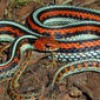 International conventions and national or regional legislation concerning threatened or endangered animals specify the species or subspecies name of the animals that the law intends to protect. Thereafter, protection goes with the name rather than the endangered species itself. Any subsequent change in name could therefore affect conservation measures. The Commission often acts to protect the names of endangered species...
International conventions and national or regional legislation concerning threatened or endangered animals specify the species or subspecies name of the animals that the law intends to protect. Thereafter, protection goes with the name rather than the endangered species itself. Any subsequent change in name could therefore affect conservation measures. The Commission often acts to protect the names of endangered species... 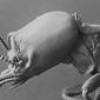 Drywood termites, where abundant, can cause great economic losses, with costs for control and repair of their damage rivaling that of subterranean termites. The West Indian termite Cryptotermes brevis is considered the world's most destructive drywood termite. Another economically important termite, Cryptotermes dudleyi, has the potential to cause economic losses comparable to that currently caused by C. brevis...
Drywood termites, where abundant, can cause great economic losses, with costs for control and repair of their damage rivaling that of subterranean termites. The West Indian termite Cryptotermes brevis is considered the world's most destructive drywood termite. Another economically important termite, Cryptotermes dudleyi, has the potential to cause economic losses comparable to that currently caused by C. brevis...  Since its foundation, the Commission has considered numerous applications dealing with the names of fossils including foraminifera, brachiopods, molluscs (e.g. ammonites), arthropods (e.g. trilobites), graptolites, reptiles (e.g. dinosaurs), birds (e.g. Archaeopteryx) and mammals. Fossil foraminifera are crucial indicators in biostratigraphy, palaeoecology, palaeobiogeography, and oil exploration...
Since its foundation, the Commission has considered numerous applications dealing with the names of fossils including foraminifera, brachiopods, molluscs (e.g. ammonites), arthropods (e.g. trilobites), graptolites, reptiles (e.g. dinosaurs), birds (e.g. Archaeopteryx) and mammals. Fossil foraminifera are crucial indicators in biostratigraphy, palaeoecology, palaeobiogeography, and oil exploration... 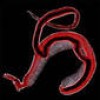 Leucocytozoonosis is a disease caused by protozoan blood parasites of the genus Leucocytozoon that is mainly transmitted by the bite of various species of black fly (Simuliidae). Both wild and domestic bird species are susceptible to infection with Leucocytozoon species, including: chickens (L. caulleryi), ducks & geese (L. simondi), turkeys (L. smithi), pigeons & doves (L. marchouxi) and raptors (L. ziemanni and L. toddi)...
Leucocytozoonosis is a disease caused by protozoan blood parasites of the genus Leucocytozoon that is mainly transmitted by the bite of various species of black fly (Simuliidae). Both wild and domestic bird species are susceptible to infection with Leucocytozoon species, including: chickens (L. caulleryi), ducks & geese (L. simondi), turkeys (L. smithi), pigeons & doves (L. marchouxi) and raptors (L. ziemanni and L. toddi)... 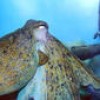 The names of the economically important edible octopus, Octopus vulgaris Cuvier, 1797, and squid, Loligo vulgaris Lamarck, 1795, were threatened by long disused senior synonyms. Octopus vulgaris, the common octopus, is a coastal species with a cosmopolitan distribution in temperate and tropical seas. It is a commercially important species in northeast African, Atlantic European, Mediterranean and Japanese waters...
The names of the economically important edible octopus, Octopus vulgaris Cuvier, 1797, and squid, Loligo vulgaris Lamarck, 1795, were threatened by long disused senior synonyms. Octopus vulgaris, the common octopus, is a coastal species with a cosmopolitan distribution in temperate and tropical seas. It is a commercially important species in northeast African, Atlantic European, Mediterranean and Japanese waters...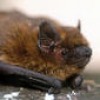 The term "biodiversity" coined, in 1985, as a contraction of "biological diversity" refers to the variety of life in all its forms, levels and combinations: including ecosystem diversity, species diversity, and genetic diversity. With the current international focus on the global crisis in biodiversity, the importance of the Commission's work to ensure that the correctness of the scientific names of animals is now of the highest priority...
The term "biodiversity" coined, in 1985, as a contraction of "biological diversity" refers to the variety of life in all its forms, levels and combinations: including ecosystem diversity, species diversity, and genetic diversity. With the current international focus on the global crisis in biodiversity, the importance of the Commission's work to ensure that the correctness of the scientific names of animals is now of the highest priority... 